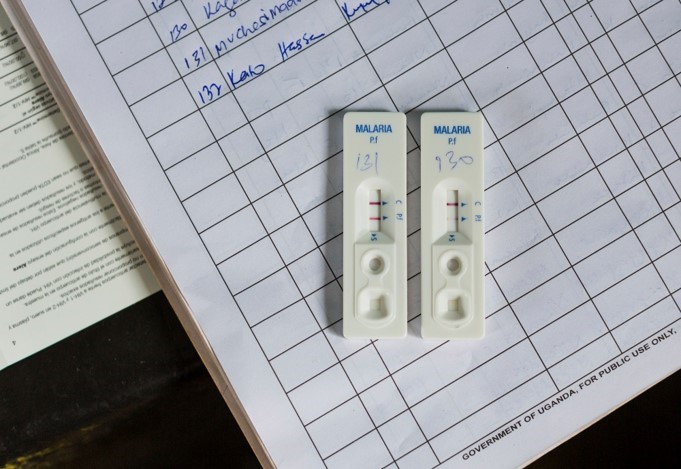Gold and COVID-19 have found themselves in the same sentence regularly over the last few weeks; the recent outbreak of the virus and subsequent elevation of the situation to a pandemic status by the World Health Organization (WHO) has rocked the global economy. My colleagues at the World Gold Council have blogged about a range of impacts of COVID-19 on gold this month, from the US Federal Reserve’s recent rate cut to the ongoing gold-backed ETF inflows. However, there is another aspect to gold’s role in our society which tends to receive much less attention: it is a critical component in many diagnostic test kits.
Gold’s hidden role in diagnosing disease; COVID-19
17 March, 2020
Having worked in the healthcare sector for several years prior to joining the mining and metals industry, I have always enjoyed discussing the subtle (and often unknown) links between the two. I consider medical diagnostics to be one of the most important of these links; to cut a long story short, tiny spherical particles of gold have been used as “indicators” in lateral flow assays (LFAs) for over 40 years. You may not recognise the terminology, but ‘LFA’ technology is in everyday use all over the world in staggering numbers. To contextualise this statement, the WHO estimate that 412 million malaria LFAs were sold in 2018, with over 250 million of these purchased and distributed by National Malaria Programmes worldwide.1 Tests are produced for dozens of life-threatening illnesses, meaning that the total annual number of LFAs is likely to comfortably exceed half a billion. And the vast majority of these contain a tiny quantity of gold.2
But what has all of this got to do with COVID-19? Well, given the nature of the current pandemic, quick and accurate diagnosis is absolutely critical to help understand, track and tackle the outbreak. There is already a huge range of diagnostic tools available to governments around the world, but these can be limited by two key parameters: speed and cost. Almost all of them require samples to be taken and sent off to a centralised laboratory for analysis which can be slow and expensive, especially during times of crisis.
Fortunately, diagnostics firms have responded resolutely to this pandemic. At the time of writing, the Foundation for Innovative New Diagnostics’ (FIND) COVID-19 database details almost 200 diagnostics which are either commercially available or in development, and they have also announced two evaluation programmes which will help ensure data on the performance of the key tests are available to healthcare authorities worldwide.3 The majority of these tests are lab-based (so-called molecular diagnostics), but increasing numbers of first-generation biomarker LFAs are being registered and evaluated, many of which are gold-based. One of the first companies to do so was US-based BioMedomics, whose COVID-19 rapid test identifies the presence of biomarkers from the body’s immune response to COVID-19 instead of looking for the virus itself, and can help determine if a person has been infected with COVID-19 even after the virus is no longer present. This LFA was utilised in China at the beginning of the outbreak and has now received CE-mark certification for use in Europe,4 is under evaluation by the US Food and Drug Administration (FDA) in the USA5 and the company is reportedly in the process of supplying the Kuwaiti government with 400,000 kits for immediate deployment.6 Companies are also now developing LFAs which can identify the virus directly. For example, leading UK diagnostics firm Mologic recently announced receipt of a large grant from the UK government to develop a COVID-19 LFA.7 Larger companies like Mologic have strong partnerships and supply chains already in place, so the development, manufacture and delivery of new LFA diagnostics can be achieved quickly.
The availability of such diagnostic kits is determined on a country-by-country basis, and the speed to market generally depends on that country’s specific regulatory requirements. However, authorities worldwide appear to be accelerating the route to market for new COVID-19 diagnostics. The FDA, for example, has recently published guidelines to this effect.8
The financial sector has always regarded gold as a safe and stable store of value, particularly during times of stress. Similarly, gold has been the material of choice in the LFA diagnostics space for 40 years because of its unique physical properties, and gold particles are likely to be at the heart of many of the new COVID-19 LFAs we see certified for use around the world in the coming weeks and months. These diagnostics will help to complement lab-based testing, and further equip healthcare professionals and scientists to understand and track the pandemic across a broad range of settings.
Footnotes
1 WHO World Malaria Report 2019. https://www.who.int/publications-detail/world-malaria-report-2019
2 LFAs utilise gold in nanoparticulate form, meaning every test contains a minute quantity of metal. Demand for gold in the sector is effectively immaterial with respect to supply and demand in the wider gold market.
3 FIND, accessed 13 Mar 2020. www.finddx.org/covid-19/
4 Biomedomics webpage, accessed 19 Oct 2022. https://www.biomedomics.com/category/infectious-disease/
5 NCBC news article, accessed 16 Mar 2020. www.ncbiotech.org/news/biomedomics-seeks-fda-ok-covid-19-rapid-diagnostic
6 Kuwait News Agency report, accessed 16 Mar 2020. www.kuna.net.kw/ArticleDetails.aspx?id=2879288&language=en
7 Technology Network article accessed on 18 Oct 2022. https://www.technologynetworks.com/diagnostics/product-news/uk-government-awards-mologic-c1-million-to-develop-rapid-diagnostic-test-for-covid-19-331767
8 FDA COVID-19 update, accessed 16 Mar 2020. www.fda.gov/news-events/press-announcements/coronavirus-covid-19-update-fda-provides-more-regulatory-relief-during-outbreak-continues-help

